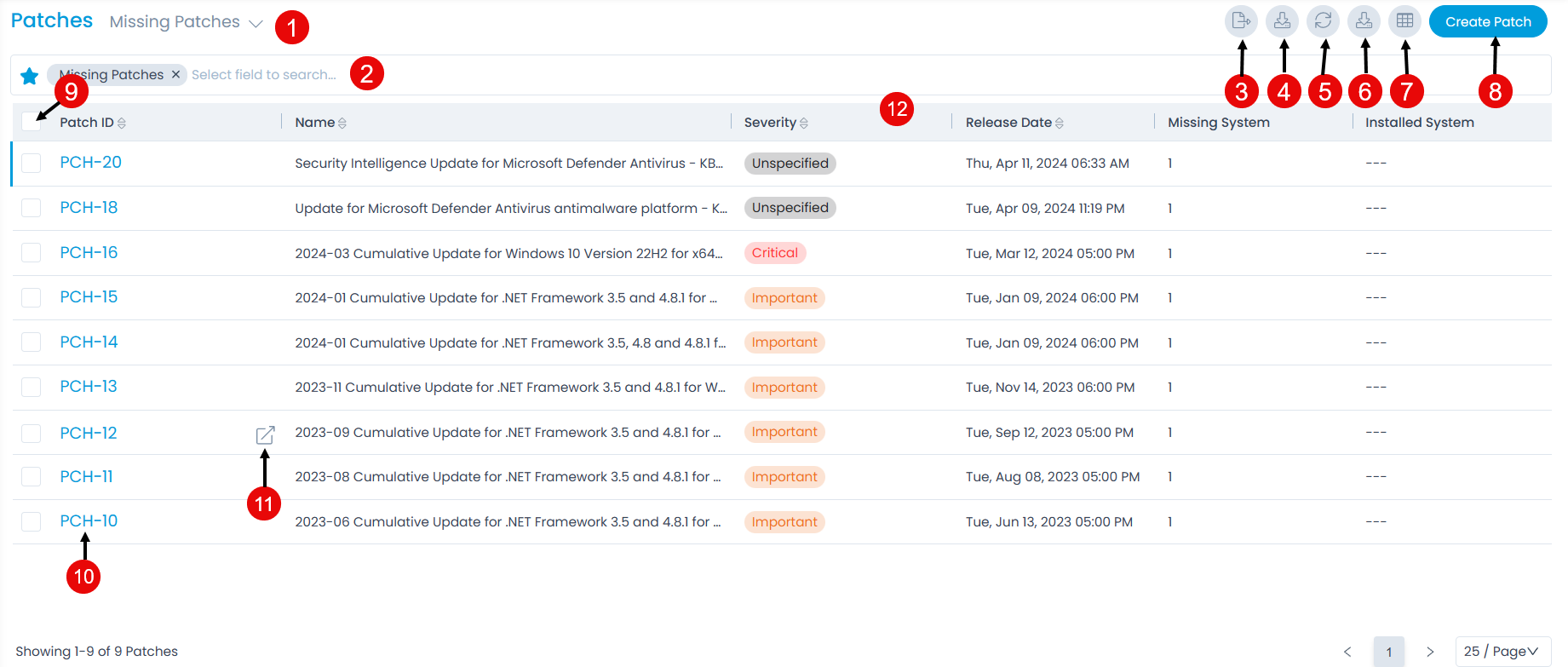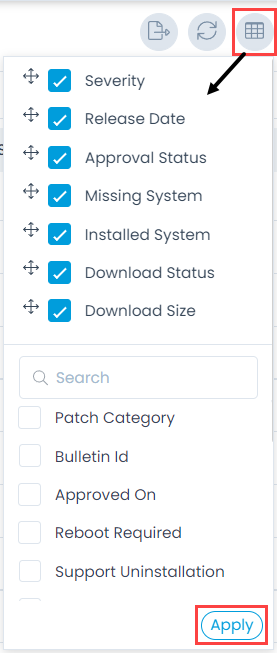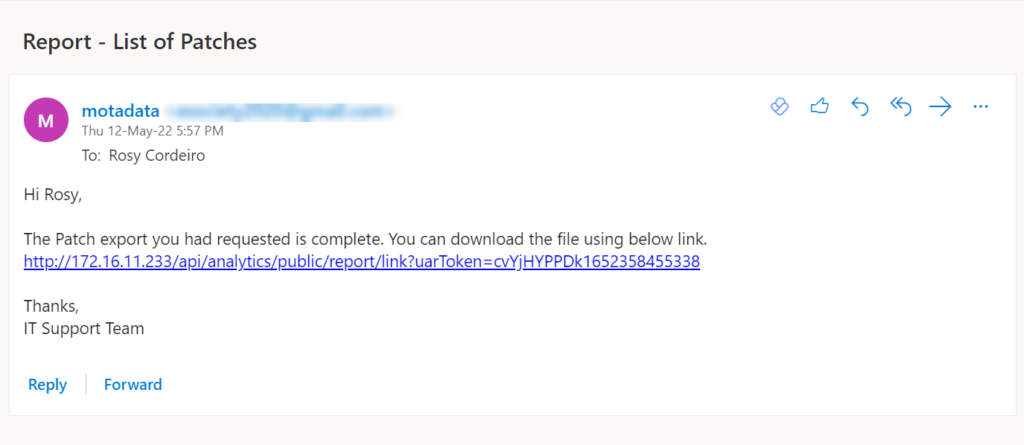Patch List View
This page displays the patches automatically discovered and manually created. The discovered patches appear in the list as and when the database updates, based on the schedule configured from the Patch Settings page. Also, it displays the options like export, refresh, column selection, and create patch at one place. The patches list page displays the details as per the columns selected. Also, you can filter the list using the default or custom filters.

The page provides the following features:
- Filter: You can filter the patch list by clicking the desired option. For example: If Missing Patches is selected, the grid displays all the missing patches.
- Search: You can look for a specific patch by searching them. The search is a faceted search and allows you to find with specific criteria. You can find more details in the search section.
- Export: You can export the patch list in CSV or PDF format.
- Download: You can download the patch list in CSV and Excel format. Moreover, the Excel file can be made password-protected.
- Refresh: You can refresh the patch list. This is useful when multiple people are working on the patch and contents are updated frequently.
- Download Patch: You can download the list of missing patches. A JSON file containing the list of patches will be downloaded.
- Column Selection: You can select the columns to be displayed in the grid as shown below.

- Create Patch: You can create a patch.
- Grid: The grid displays the details of the patch as per the selected columns.
- View Details Page: You can click the Patch ID to view the Patch Details page.
- View Details Page in a new tab: You can click the arrow icon next to the Patch ID to view the details page in a new tab.
- No. of Records: You can change the number of records to be displayed on a page. You can view 10, 25, and 50 records on a single page.
Export Patch
This option allows you to export the patch list locally in the form of CSV or Excel for future reference.
To export the patch list,
Click on the Export icon and a popup appears.
Select the Format as CSV or Excel in which the list is required.
If Excel is selected, you can enable the Password Protected option to secure the file. If enabled enter the Attachment Password. If not provided, the common password set from Edit User Profile page will be used.
Select the desired fields to be exported.
Click Export and an email is received on the Administrator's Email-id with the link to download the list in the selected format.

